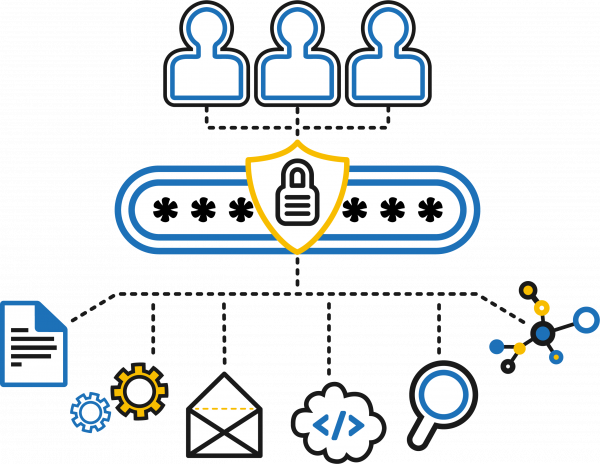In today’s digital landscape, where cyber threats are becoming increasingly complex, organizations are prioritizing robust security frameworks to protect critical data and systems. Privileged Access Management (PAM) solutions have emerged as a crucial layer in cybersecurity, offering control, monitoring, and protection over privileged accounts. These accounts typically hold elevated permissions that, if compromised, can lead to severe security breaches. PAM solutions not only limit potential damage but also ensure compliance and operational integrity.
Privileged Access Management is a subset of identity security that focuses on managing and securing accounts with special access rights. These include system administrators, IT professionals, and other users who need advanced permissions to perform sensitive tasks. PAM solutions work by granting least privilege access, meaning users are given the minimum levels of access necessary to perform their roles. This significantly reduces the attack surface and helps organizations prevent insider threats or external breaches stemming from credential misuse.
A core function of PAM solutions is credential vaulting, where privileged credentials are stored in an encrypted, centralized vault. Access to these credentials is tightly controlled and monitored. In addition to secure storage, PAM systems facilitate session monitoring and recording, which provides complete visibility into all activities performed using privileged access. This level of oversight plays a critical role in auditing and ensures accountability by tracking who accessed what and when.
Multifactor authentication (MFA) is another vital feature integrated into most modern PAM solutions. By requiring users to verify their identity through multiple methods—such as passwords, biometrics, or hardware tokens—PAM adds an extra layer of protection. This makes it exponentially more difficult for malicious actors to gain unauthorized access, even if credentials are compromised.
PAM also enables granular access controls that restrict user privileges based on roles, tasks, or time duration. Temporary access can be granted for specific maintenance tasks, and automatically revoked afterward, minimizing the risk of lingering access rights. Moreover, real-time threat analytics allow organizations to detect abnormal behavior patterns and respond immediately, preventing potential damage before it escalates.
Integration with existing IT environments is a key strength of PAM solutions. They can seamlessly connect with various systems, including cloud platforms, on-premises servers, and hybrid infrastructures. This flexibility ensures that security policies are uniformly applied across all critical systems, regardless of where they are hosted. Additionally, PAM tools often support automation features that streamline compliance reporting and policy enforcement, reducing the administrative burden on IT teams.
Regulatory compliance is another major driver for PAM adoption. Many standards, such as GDPR, HIPAA, and SOX, require strict controls over privileged access to sensitive data. PAM helps organizations meet these requirements by offering audit-ready reports, enforcing least privilege access, and logging all privileged activities. This not only reduces the risk of penalties but also demonstrates a strong commitment to data protection.
Another benefit of implementing PAM solutions is the mitigation of insider threats. Employees, contractors, or partners with privileged access can pose significant risks, whether intentionally or accidentally. PAM helps in proactively detecting misuse through session recording and behavior analytics, allowing security teams to take prompt corrective actions. By doing so, businesses can cultivate a culture of accountability and security consciousness among users.
From a business continuity standpoint, PAM also plays a vital role. By centralizing access controls and enforcing strict policies, organizations can maintain operations even during security incidents. If a privileged account is compromised, PAM solutions can quickly isolate the threat, terminate active sessions, and revoke access, all while maintaining oversight through detailed logs and alerts.
Scalability is another factor that makes PAM an essential component of modern cybersecurity strategies. As organizations grow and their digital ecosystems become more complex, the number of privileged accounts increases. PAM solutions are designed to scale with these changes, ensuring consistent access governance without compromising performance or user experience. Whether managing hundreds or thousands of accounts, PAM offers the tools needed to maintain strict control and visibility.
Read More - https://www.marketresearchfuture.com/reports/privileged-access-management-solutions-market-10231
In summary, Privileged Access Management solutions are indispensable for safeguarding critical systems and data from both internal and external threats. By offering comprehensive access control, secure credential management, real-time monitoring, and compliance support, PAM strengthens the overall cybersecurity posture of any organization. With the increasing prevalence of sophisticated cyberattacks, investing in a robust PAM solution is no longer optional—it is a necessity for any enterprise aiming to protect its most valuable digital assets.
